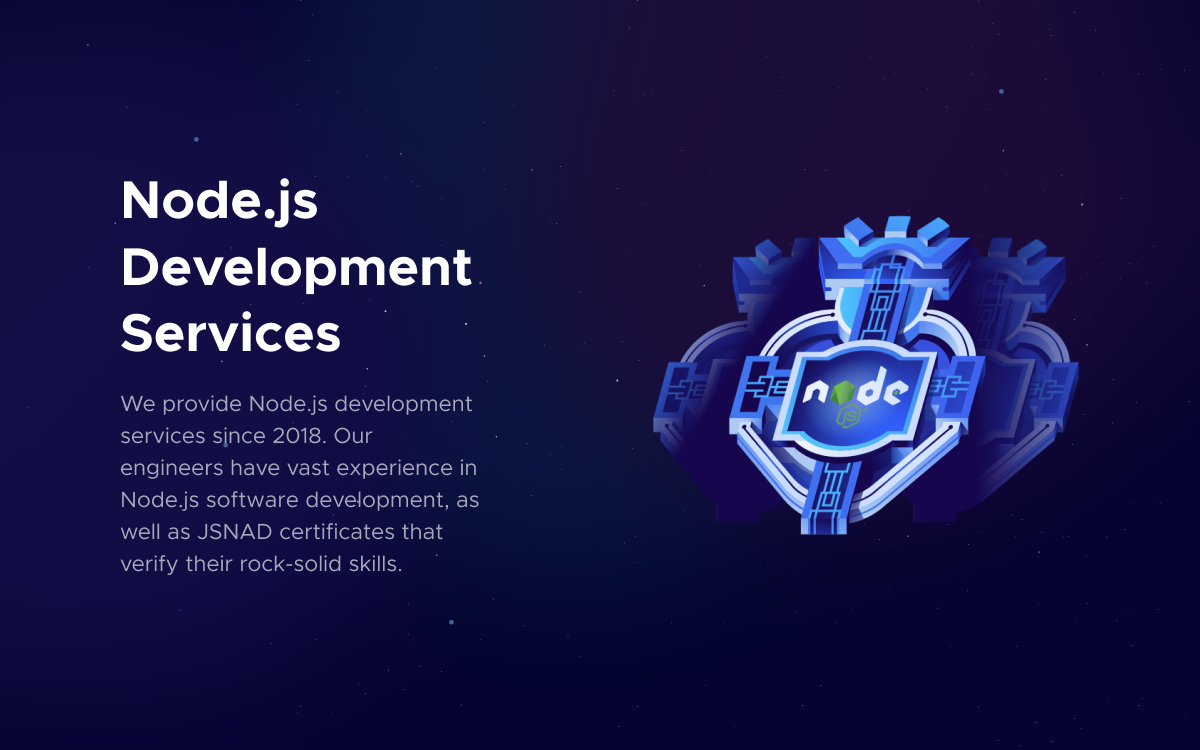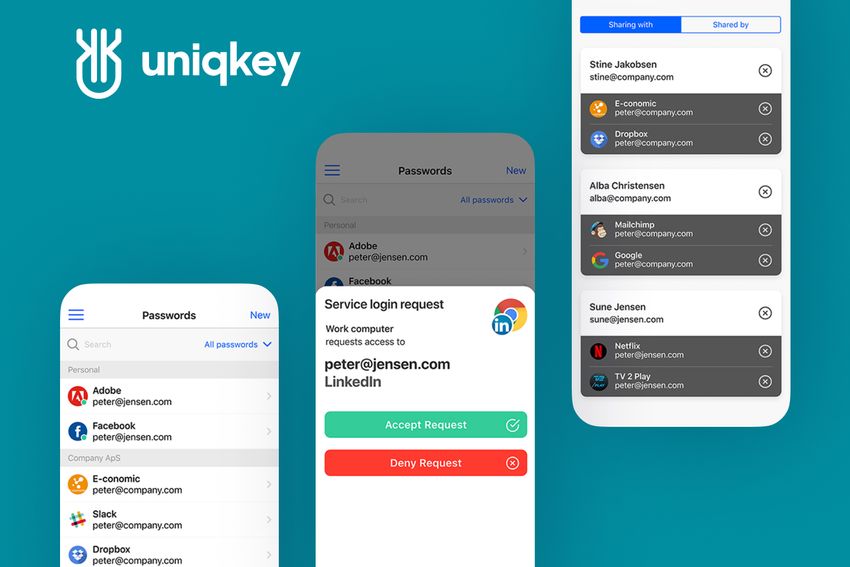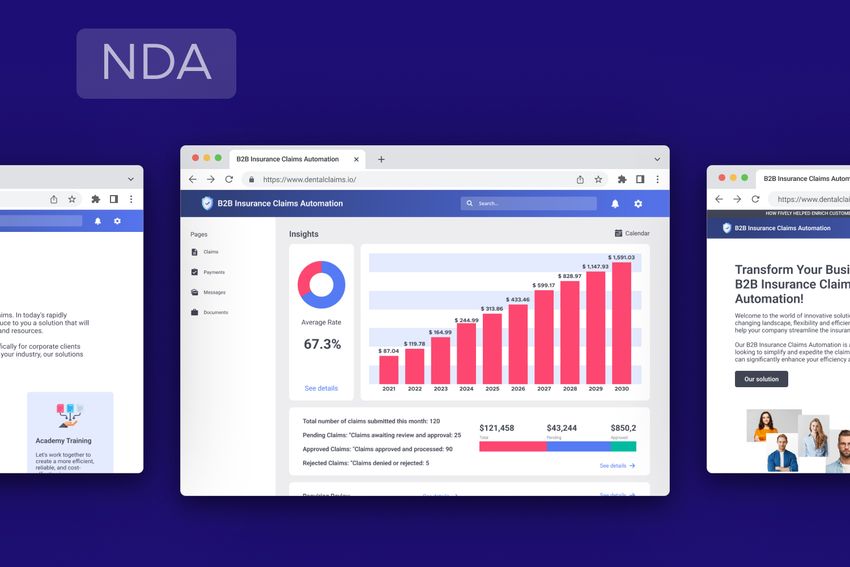Deno vs Node.js: Which One Will Rule the JavaScript Runtime World in 2025?
Learn how Deno and Node offer distinct benefits for your development needs, with Deno excelling in security and microservices, and Node.js in APIs and serverless environments.
The battle of the JavaScript runtimes is on, and in one corner, we have the well-established Node.js, powering the backend of countless web applications. But wait, there’s a new contender in town — Deno, the modern, security-first runtime that promises to challenge Node’s dominance.
Is Deno ready to dethrone Node.js, or does Node still reign supreme? Let’s dive deep into this showdown and figure out which one is the right fit for your development needs in 2025 and beyond. Get ready to pick your side — it’s going to be a thrilling ride!
What is Deno?
Deno is a secure, modern JavaScript and TypeScript runtime built by Ryan Dahl, the creator of Node.js, as a response to some of the limitations and design decisions he regretted in Node.
According to Dahl, the creator of both runtimes, Node.js has three significant drawbacks:
- A poorly designed module system that relies on centralized distribution.
- Unstable legacy APIs.
- Lack of security.
Launched in 2018, Deno was designed with a focus on security, simplicity, and developer experience. Unlike Node.js, Deno runs on TypeScript out of the box, without the need for additional tools like Babel or transpilers. It also comes with a built-in package manager, eliminating the need for npm.
Deno’s security-first approach means that scripts are sandboxed by default, preventing access to files, network, or environment variables unless explicitly granted. With a fresh take on modern JavaScript development, Deno offers improved performance, streamlined tooling, and a more secure environment for developers looking to build scalable, future-proof applications.
Here's a simple example of using Deno to run a basic script fetching data from an API:
- Create a file named fetchData.ts (note that Deno supports TypeScript natively:
2. Run the script using the following command:
deno run - -allow-net fetchData.ts
Here,--allow-net is a permission flag that allows network access (in this case, to fetch data from the URL). The script fetches a post from a public API and logs the response to the console.
What is Node.js?
Node.js is a powerful, open-source JavaScript runtime built on Chrome’s V8 engine that enables developers to execute JavaScript code on the server side. Unlike traditional JavaScript, which runs in the browser, Node.js allows developers to build scalable and high-performance server-side applications using JavaScript.
It was created in 2009 by Ryan Dahl and has since gained widespread popularity due to its non-blocking, event-driven architecture, making it ideal for handling I/O-heavy operations such as real-time data processing and handling multiple concurrent requests. Node.js uses npm (Node Package Manager) to manage libraries and dependencies, providing access to a vast ecosystem of open-source modules.
It is commonly used for building web servers, RESTful APIs, and full-stack JavaScript applications, and it supports both asynchronous and synchronous programming paradigms. Thanks to its fast execution speed and scalability, Node.js has become the backbone of many modern applications, from web development to microservices.
Here's a simple example of using Node.js to create a basic web server that listens on a port and responds with a message:
- Create a file named server.js.
2. Run the script using the following command:
node server.js
This starts a simple HTTP server that listens on port 3000. When you visit http://127.0.0.1:3000/ in your browser, you’ll see the message "Hello, World!".
Deno vs Node: Main Differences
When comparing Deno and Node.js, several key differences set them apart in terms of functionality, architecture, and developer experience. Let’s dive into the most significant distinctions:
Security: Why Deno Outshines Node.js
Security was one of the primary driving factors behind the creation of Deno by Ryan Dahl. Unlike Node.js, Deno was designed with a secure environment in mind, prioritizing developer control and permission management.
Deno runs all code within a sandboxed environment, preventing unauthorized access to critical system resources, such as the file system. Before any interaction with these resources is allowed, Deno requires explicit permission from the developer. This permission is granted via command-line flags, ensuring that the developer retains full control over their code's behavior.
Some of the key flags include:
--allow-env: Grants access to environment variables for configuration management.
--allow-hrtime: Allows high-resolution time measurement, useful for performance monitoring.
--allow-net: Provides network access for making API calls or connecting to databases.
--allow-read: Enables read access to files on the system.
--allow-run: Grants permission to run subprocesses.
--allow-write: Allows modifications to the file system, such as writing files or creating directories.
Node.js, on the other hand, does not enforce such strict sandboxing and does not require permission for accessing system resources. This lack of inherent security measures can lead to potential vulnerabilities, particularly when third-party libraries are introduced without proper caution. While Node.js does have built-in protections for common threats like Cross-Site Request Forgery (CSRF) and Cross-Site Scripting (XSS), its security relies more heavily on the developer’s practices, such as logging, error handling, and user input validation.
Third-party Package Management
Node.js: Node.js relies on npm (Node Package Manager) to manage third-party packages. Npm is a massive ecosystem that provides a vast collection of open-source libraries and tools.
Deno: Deno, on the other hand, does not use npm. It has no centralized package manager. Instead, it imports packages directly via URLs, making it more decentralized and simplifying dependency management. This means you can load any module hosted on a server by providing a URL to it.
APIs
Node.js: Node.js comes with a rich set of built-in APIs for handling everything from networking to file system manipulation. The APIs are synchronous by default, but Node.js relies heavily on asynchronous programming for non-blocking operations.
Deno: Deno’s APIs are designed with modern web standards in mind. Deno uses promises and async/await syntax by default, making the code cleaner and more modern. It also introduces some new features, such as a more secure execution environment for sandboxing, making it more focused on developer security.
TypeScript Support
Node.js: earlier, Node.js didn’t natively support TypeScript. Developers needed to install and configure tools like TypeScript or Babel to compile TypeScript into JavaScript. However, since V22.6.0, Node.js has experimental support for some TypeScript syntax via "type stripping". You can write code that's valid TypeScript directly in Node.js without the need to transpile it first (read more here).
Deno: Deno has built-in support for TypeScript out of the box, meaning you don’t need any extra configuration or transpilers. Deno natively handles .ts files, simplifying the process for TypeScript developers and making it easier to work with modern JavaScript.
Browser Compatibility
Node.js: Node.js is primarily designed for server-side applications and does not provide native support for running in the browser. While many tools and bundlers (like Webpack) can make Node code compatible with the browser, it's not inherently designed for it.
Deno: Deno is more aligned with modern browser standards and is designed to make it easier to run code in both the browser and the server. It has a more browser-compatible design, enabling smoother transitions for developers who are building full-stack applications.
Community Support
Node.js: Node.js has been around for over a decade and has an enormous, active community. With millions of developers contributing to its ecosystem, Node.js boasts a rich set of libraries, tools, and documentation.
Deno: Deno is much younger, with a smaller community compared to Node.js. However, it’s quickly gaining traction, and its modern approach is appealing to developers who want a more secure and forward-thinking alternative to Node.js. While Deno’s ecosystem is still growing, it is backed by Ryan Dahl, the original creator of Node.js, which gives it credibility and a bright future.
Related reading: Bun vs Node Comparison
Thus, the choice between Deno and Node comes down to the project’s needs and whether you prefer a more modern, secure, and TypeScript-friendly runtime (Deno) or the vast ecosystem and maturity of Node.js.
Pros and Cons of Deno
As with any technology, Deno comes with its advantages and drawbacks. Here's a breakdown of the key pros and cons to help you decide whether it's the right choice for your project.
Pros of Deno
Security-first Design
Deno's sandboxed environment ensures that your code is more secure by default. It requires explicit permission to access critical system resources like the file system, network, and environment variables, which reduces the risk of malicious actions.
Built-in TypeScript Support
Deno has native support for TypeScript, meaning you don't need to set up additional tools or compilers. This makes it easier to develop applications using TypeScript right out of the box.
Modern Standard Library
Deno comes with a modern, well-designed standard library. Unlike Node.js, Deno doesn’t rely on external modules for essential functionality, which can reduce the complexity and overhead of managing dependencies.
No Package Manager
Deno eliminates the need for a package manager like npm. Instead, it imports modules directly from URLs, simplifying dependency management and avoiding the clutter of package.json files.
Built-in Tooling
Deno includes built-in tools for testing, formatting, and bundling, saving developers time and effort by offering these utilities out of the box.
Simplified Imports
Deno uses URLs for importing packages, making it more flexible and easier to import external modules directly from a remote repository, without the need for an intermediary package manager.
Promises
Deno is built with Promises at its core — all asynchronous methods return Promises by default. It supports top-level await, allowing developers to use await in the global scope without needing to wrap it in an async function. While Node.js recently introduced support for top-level await, Deno has had this feature from the start, making asynchronous programming more intuitive.
Even though modern Node.js now supports Promises and async/await, many of its core APIs still rely on callbacks for backward compatibility—something Deno eliminates entirely by making Promises the default.

Cons of Deno
Smaller Ecosystem
Deno is still relatively new, and its ecosystem is not as extensive as Node.js. While it’s growing rapidly, many popular libraries and frameworks from Node.js may not have native Deno support, requiring workarounds or additional development effort.
Learning Curve for Developers
Deno introduces a few significant changes compared to Node.js, such as its permission model and module system. For developers familiar with Node.js, it may take time to adjust to these new concepts and best practices.
Less Community Support
While Deno's community is active, it is still smaller compared to Node.js. This means fewer resources, tutorials, and third-party tools, which can make finding solutions to problems a bit more challenging.
Compatibility Issues
Since Deno is not fully compatible with Node.js, many Node.js modules and tools don’t work directly with Deno. As a result, migrating existing Node.js projects to Deno could require significant refactoring.
Performance Considerations
While Deno performs well in many cases, it may not always match the performance of Node.js in certain scenarios, especially for highly optimized Node applications that have benefited from years of performance tuning.
Thus, Deno is a powerful and modern runtime with a strong focus on security, ease of use, and TypeScript support. However, its smaller ecosystem, learning curve, and compatibility issues with existing Node.js modules may pose challenges for certain projects. As Deno matures, many of these drawbacks may be addressed, making it a strong contender for new applications, particularly those focused on security and simplicity.
Pros and Cons of Node
Node.js has become one of the most popular JavaScript runtimes for building scalable and fast applications. Below, we’ll look at its key advantages and challenges to help you understand if it’s the right choice for your project.
Pros of Node.js
Non-blocking, Asynchronous I/O
Node.js is built on a non-blocking, event-driven architecture, allowing it to handle a large number of concurrent requests efficiently. This makes Node.js highly scalable and perfect for I/O-heavy applications like chat systems, real-time collaboration tools, and streaming services.
JavaScript Everywhere
With Node.js, you can use JavaScript both on the server side and client side. This unified language environment reduces the learning curve for developers and improves consistency throughout the application.
Large Ecosystem (npm)
Node.js has one of the largest and most active ecosystems of open-source libraries, thanks to npm (Node Package Manager). You can easily find libraries to address virtually any need, reducing development time and effort.
Fast Execution
Built on Google Chrome's V8 JavaScript engine, Node.js compiles JavaScript into machine code for fast execution. This high-performance runtime is particularly beneficial for applications that require real-time data processing, such as messaging apps or online gaming.
Scalability
Node.js is designed to handle a large number of simultaneous connections. It is well-suited for building scalable applications due to its event-driven nature, making it ideal for applications that require high scalability, such as microservices or APIs.
Active Community and Support
Node.js boasts a vast, active community, offering plenty of resources, tutorials, and third-party tools. This large community also means you’ll have access to extensive support when troubleshooting and resolving issues.

Cons of Node.js
Single-threaded Model
Node.js operates on a single thread, which can become a limitation for CPU-heavy tasks such as image processing or data manipulation. While it is excellent for I/O-bound tasks, it may not be the best choice for compute-intensive operations.
Callback Hell
Asynchronous code execution in Node.js can lead to "callback hell," where deeply nested callbacks can make the code hard to maintain and understand. Although this can be mitigated with Promises and async/await syntax, it remains a potential challenge for complex applications.
Performance Bottlenecks with Heavy Computation
Since Node.js is single-threaded, handling heavy computational tasks may block the event loop and degrade performance. For applications that require intensive processing, additional solutions such as worker threads or clustering may be necessary.
Immaturity of Some Libraries
While npm offers a vast number of libraries, some of them may be immature or not maintained well. This can introduce bugs or security vulnerabilities, making it important to carefully choose and audit third-party packages.
Lack of Built-in Tools
Unlike some other backend frameworks, Node.js doesn’t come with many built-in tools or features. This may require developers to rely on third-party packages or build functionality themselves, which can increase development time.
Memory Consumption
Node.js can sometimes consume more memory compared to other languages or runtimes, especially in cases of heavy use of resources. This can be an issue in environments where memory optimization is crucial.
Node.js offers excellent performance, scalability, and a large ecosystem of libraries, making it ideal for building high-speed, real-time applications. However, it can struggle with CPU-heavy tasks and may require additional strategies to avoid common pitfalls like callback hell.
Despite these challenges, Node.js remains a powerful choice for web developers looking to build scalable and high-performance applications, particularly for I/O-intensive use cases.
Deno vs Node.js Performance
So, who is in the lead?
To compare their performance, let’s turn to the benchmarks represented in this GitHub repository. As we can see on the diagram below, Deno v2.2.0 demonstrates a significant performance advantage over Node.js v22.14.0:
While these results showcase Deno's strengths against Node.js, real-world performance depends on multiple factors, that’s why most part of developers still choose Node over Deno. Why? And is it really time to switch to Deno? Let’s figure it out.
Should You Switch to Deno?
The big question remains: is it time to move away from Node.js?
The answer isn’t one-size-fits-all — it depends on what you prioritize. If security, built-in modern features, and a simpler developer experience matter most, Deno offers a fresh approach, making it an excellent choice for new projects or teams looking to break free from legacy constraints.
With Deno 2, Node.js compatibility has improved significantly, making it easier to integrate with existing applications or migrate without major rewrites.
However, Node.js is far from obsolete. It remains the backbone of JavaScript development, and recent updates have introduced key improvements, including:
- Watch mode for real-time development updates
- Expanded Web API support, including Fetch and WebSockets
- Native TypeScript support (though experimental yet)
- A built-in test runner for streamlined testing
- An experimental permissions system for added security
Many of the advantages that once set Deno apart are gradually finding their way into Node.js, closing the feature gap between the two.
Should you make the switch? If you’re working with an existing Node.js codebase, sticking with it may still be the most practical choice. But if you're starting fresh and want a modern, security-first environment, Deno is an exciting alternative worth considering.
Either way, the growing competition between these two runtimes is a win for JavaScript developers — driving innovation, improving security, and expanding possibilities.
Use Cases for Node.js and Deno
Both Deno and Node.js are excellent choices for building modern web applications, but their use cases differ due to their architecture, security features, and the ecosystems they are built on. Let’s explore the key use cases for each.
Deno Use Cases
Secure Applications: Deno was designed with security in mind. Its sandboxing feature and explicit permission handling make it ideal for building secure applications where controlling access to resources like the file system, environment variables, and networks is critical. It's perfect for applications that handle sensitive data or require higher levels of security, such as banking, healthcare, or privacy-focused tools.
- Typescript-First Projects: Deno’s native TypeScript support without requiring additional configuration makes it an excellent choice for projects that heavily rely on TypeScript. Whether you are building APIs, web apps, or real-time systems, Deno provides an efficient, streamlined workflow for developers who prefer TypeScript from the outset.
- Small-Scale Applications and Microservices: For projects that require lightweight, modular, and high-performance microservices or small applications, Deno’s modern runtime, lightweight design, and native ES module support make it an attractive option. It's particularly useful for microservices that need minimal dependencies and lean codebases.
- CLI Tools: Due to Deno’s built-in TypeScript support and security features, it is a great choice for creating command-line tools that require secure, fast, and efficient execution. With Deno's simpler runtime and less configuration, it's easier to build, distribute, and maintain CLI tools.
- Serverless Functions: Deno’s emphasis on modern JavaScript/TypeScript features, combined with fast performance and secure execution, makes it an excellent fit for serverless architectures. It is ideal for use cases where lightweight, stateless, and ephemeral functions need to be executed in response to events.

Node.js Use Cases
Real-Time Applications: Node.js is renowned for handling I/O-bound tasks and can handle thousands of concurrent requests without blocking. This makes it the go-to technology for building real-time applications such as chat apps, social media platforms, and live collaboration tools that require constant server-client communication.
- Microservices: Node.js is well-suited for building microservices due to its asynchronous, event-driven architecture. It is ideal for handling many small services that communicate via HTTP or message brokers, making it an excellent choice for building scalable and decoupled architectures.
- APIs and Web Servers: Node.js shines in building RESTful APIs or GraphQL servers, particularly when combined with frameworks like Express.js. Its non-blocking I/O model ensures that APIs can scale to handle high numbers of requests and respond quickly, making it the go-to for web server and backend development.
- Single Page Applications (SPAs): With frameworks like React, Vue, and Angular, Node.js is commonly used to build SPAs. It allows seamless integration between the frontend and backend, as the same JavaScript language is used throughout the stack, making development faster and more cohesive.
- Streaming Applications: Node.js excels in building streaming applications like video streaming services, audio streaming apps, and live media broadcasting platforms. The non-blocking nature of Node.js allows efficient handling of streams, which is essential for delivering real-time media content.
- IoT Applications: Node.js is also ideal for building Internet of Things (IoT) applications due to its ability to handle many simultaneous connections efficiently. It is well-suited for collecting and processing data from IoT devices in real-time, making it perfect for smart home devices, sensors, and industrial IoT systems.
Final Thoughts: The Right Tool for Your Project Architecture
As you can see, while Deno and Node.js share common roots, they serve different purposes. Deno excels in security, modern standards, and TypeScript-first development, making it a strong choice for microservices and next-gen applications. On the other hand, Node.js remains the industry favorite for scalable, real-time applications, APIs, and serverless solutions.
Ultimately, the best choice depends on your project’s architecture, goals, and technical requirements. Whether you're embracing Deno’s modern approach or leveraging Node.js’s vast ecosystem, what matters most is using the right tool for the job.
No matter which path you take, Fively is here to help. Our expert developers can guide you through the best solutions for your needs. Whether it’s building a Deno-powered microservice or scaling a Node.js application - let’s create something great together!

Need Help With A Project?
Drop us a line, let’s arrange a discussion















